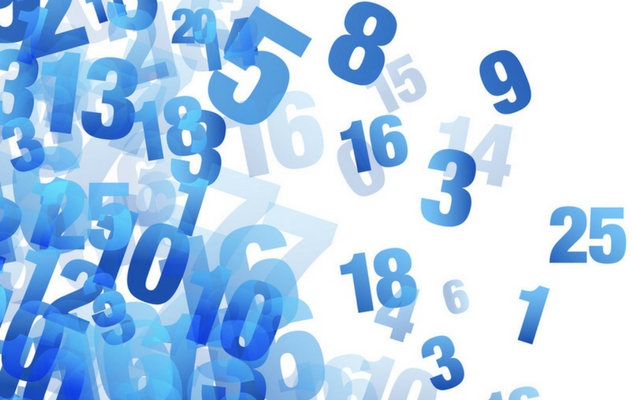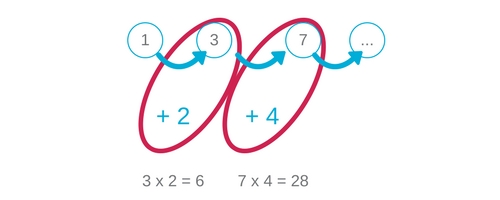
I was born on a Friday the thirteenth, so growing up my favourite number was 13. I found the fear of the number – known as Triskaidekaphobia – fascinating. In some cultures, such as in Hong Kong and Macau, thirteen is actually considered lucky. Either way, at a young age I was aware of the power that numbers can have.
In 2014, Alex Bellos set out to find the world’s favourite number. Tens of thousands of people were quick to respond to his online poll. If you don’t want to know the results then look away now: seven claimed the top spot, with thirteen coming in at sixth place. A more detailed summary of the results can be found below.
As a maths teacher, I still get asked what my favourite number is. More often than not, I reply with one of my favourite number types, an example of which are perfect numbers.
Perfect numbers
Write down all of the factors of a number and (excluding the number itself) sum them. If you got your original number, then that number is perfect. Six is the first perfect number. Its proper divisors are 1, 2 and 3, with 1 + 2 + 3 giving 6.
But this isn’t how I introduce perfect numbers in lessons.
At the start of the year, many maths curricula begin with the topic ‘factors, multiples and primes’. Often this covers established ground for students and can stifle the amount of investigation I can introduce as a teacher – something that I’m keen to embed as soon as possible with my classes.
Fortunately, ‘factors, multiples and primes’ gives me the opportunity to explore perfect numbers, using one of the very few surviving lessons I taught as a PGCE student. (A presentation for my full perfect number investigation lesson can be found at the end of the blog.)
Instead of starting the lesson with the definition of perfect numbers, we instead look at ‘factor chains’. Start with any positive integer, sum its factors (excluding the number itself) and this gives you the next number in the chain.
So, for example, 10 gives the chain

as the factors of 10 are 1, 2, 5 and 10, and 1 + 2 + 5 gives 8, and so on.
I usually give students a few examples to try out themselves, see what they notice and then ask the following questions:
- Do all of the chains end in 1?
- Is the penultimate number always prime?
- Are the numbers in the chain always decreasing?
- What is the shortest chain possible?
- What is the longest chain you can find?
Before long, as well as answering the questions above, one student will strike mathematical gold and find the number 6 as part of their chain. I’ll then invite them to share their discovery – and excitement – with the class: a perfect number! From then on, the race to find the next one (hidden somewhere between 1 and 30) is on.
The third perfect number is harder to find, coming in as 496. To help students find it, I introduce the sequence 1, 3, 7 … as below:

The final part of the lesson is then spent prodding and probing this sequence to see if another perfect number somehow drops out. What is the next term in the sequence? 13? 15? What candidates for perfect numbers do these give?
Somewhat cruelly, just like Euclid and Euler before them, I’m happy to let students slave away towards a dead end in their pursuit of the next perfect number. It might not be immediately obvious to students, but the sequence above can definitely help in their quest!
For a presentation of the investigation (including how to find larger perfect numbers), you can download this community resource.
So, what’s your favourite type of number?
